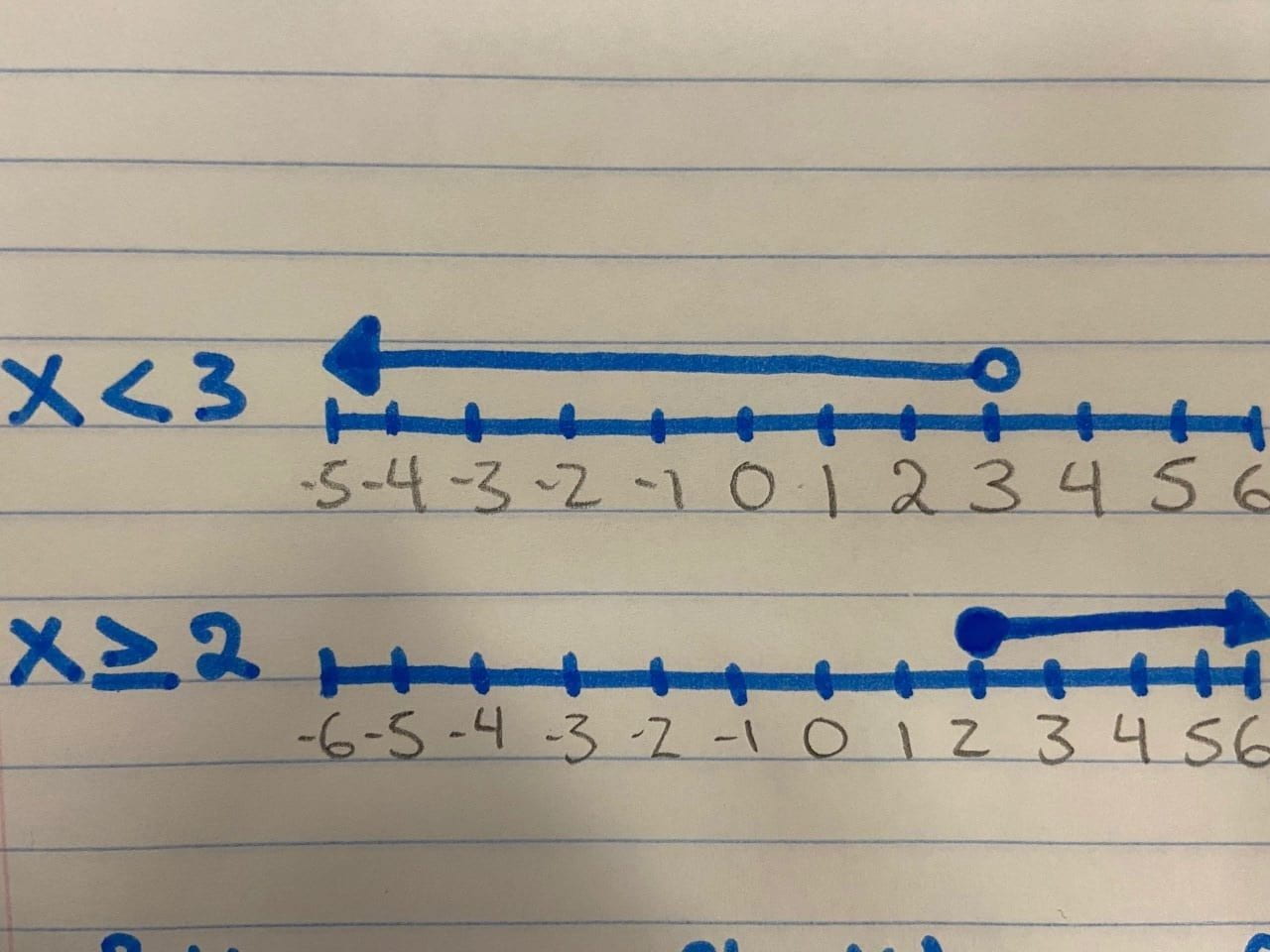What is an Inequality
An inequality says that two numbers aren’t equal. For example 2 ≠ 3. Inequalities are separated by signs. For example < and >.
What the symbols mean
An inequality can be separated by 4 different signs. The first sign is >, this is a greater than sign. A greater than sign is placed when the number on the left is bigger than the number on the right. For example 8 > 3. The second sign is <, this is a less than sign. A less than sign is placed when the number on the left is smaller than the number on the right. For example, 5 < 17. The third sign is ≥, this is the greater than or equal to sign. The greater than or equal to sign is used when the number on the left can be greater or equal to the number on the right. For example x ≥ 13. The fourth and final sign is ≤, this is the less than or equal to sign. A less than or equal to sign is placed when the number on the left is less than or equal to the number on the right. For example x ≤ 5.
How to solve
To solve an inequality you need to use legal moves, just like equations. A legal move is what you do to one side you have do it to the other. There are many legal moves that you can use. You can add things to both sides, subtract things from both sides, multiply things on both sides, divide things on both sides, and take away things from both sides. When trying to solve an equation with variables you are trying to isolate the variable and find out the value of the variable. Once you have used your legal moves and you have the variable one side and the numbers on the other (3x > 24) you have to divide just like equations. So you will end up with x > 8. If you are dividing by a negative you need to flip the sign. For example, if you have -6x < 24, after you divide and get x < -4 you need to flip the sign, so your answer becomes x > -4
How to graph an inequality
To graph an inequality on a number line you need to know what the sign is. If the sign is < or > than you will put an open dot on your graph and if the sign is =, ≤, or ≥ you will place a closed dot on your graph. Once you know what kind of dot you need, you need to find the number that is the inequality with x. For example x > 4. You would find 4 on your number line. Once you have found 4 draw the dot on top of the 4. The direction your arrow goes depends on the sign. If x is greater than a number your arrow will go to the right and if x is less than a number your arrow will go to the left. For our example, x > 4 the arrow would go to the right of 4. This is saying that x can be any number to the right of 4.
How to check an inequality
There are two ways to check if your solution is correct. For example if 2x + 1 > 5. When you do all your legal moves you end up with x > 2. The first way is to see if your equation is correct is to check your answer the same way you did with linear equations. You will insert the number into all of the spots where x is, you would change the sign to an equal sign, and then use your legal moves to solve. For example 2x + 1 > 5, would turn into 2(2)+1=5, 2×2=4, 4+1=5, and 5=5. Now you know that your number is right. The second way to check is to make sure the sign is going the right way. To do this you need to insert any number that is greater than 2 into the question. It can be any number, it can be 3 or 134. For example, if you choose 8. You would insert 8 into the question, 2(8)+1 > 5. This becomes 17 > 5. That is a true statement, so after two ways of checking you know that x > 2 is the correct answer.






One Response